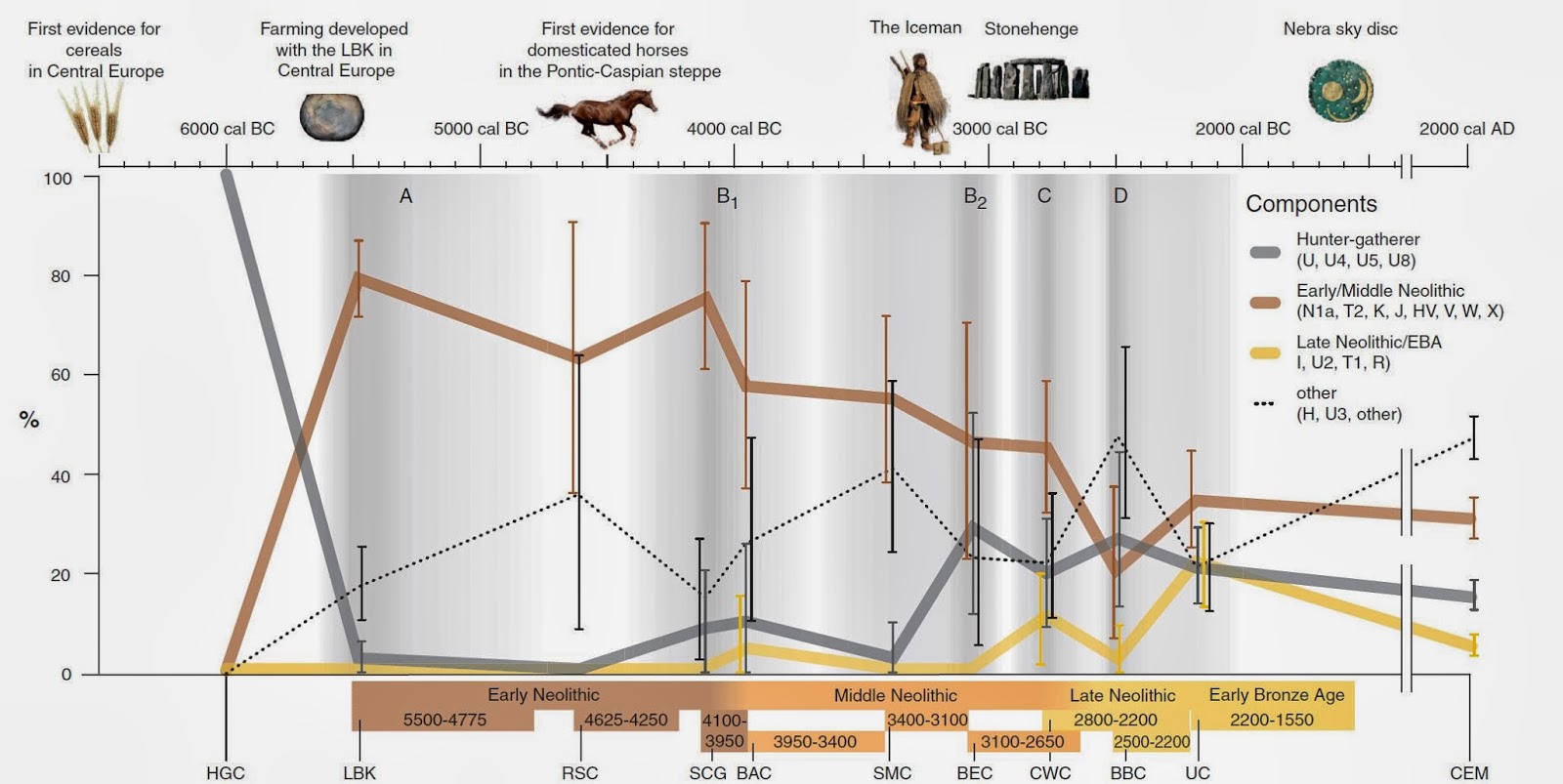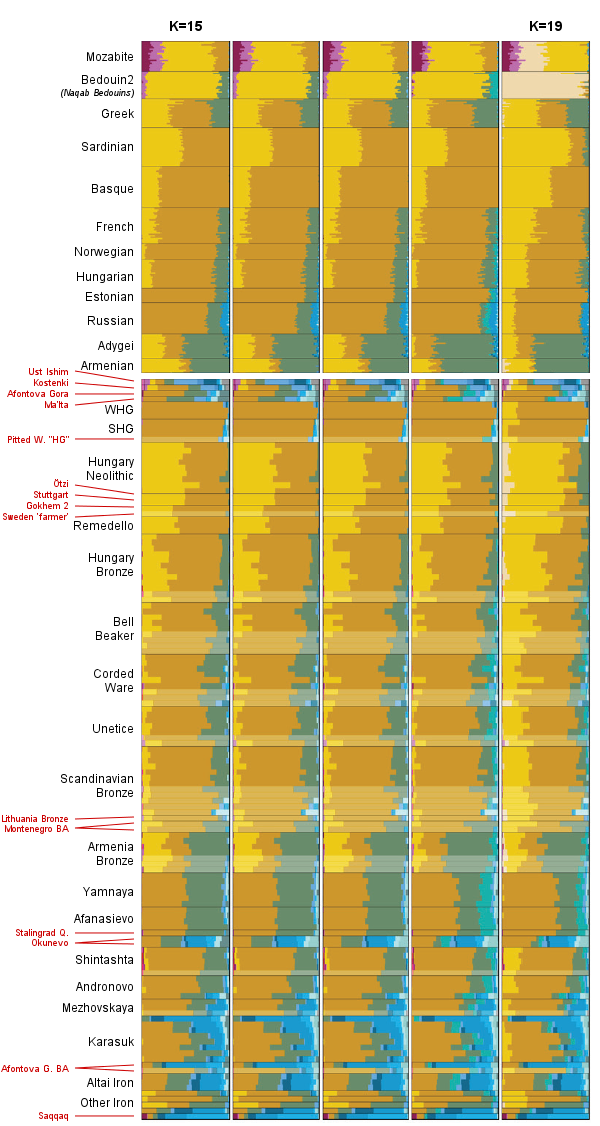Someone has told me that the ancient sample is actually that of an
Iron Age Thracian. Could someone confirm that?
If it's true, that adds a further level of complexity.
If by the Iron Age, Thracians plot this way, this far west, and this far south, then either 1) the Indo-European migrants into these more southern areas were just an elite group (a more densely populated area in the late Neolithic/Copper Age, versus a more depopulated area in certain parts of central and certainly very northern and eastern and northeastern Europe?), or 2) the Indo-European or Indo-Europeanized group that moved into the Balkans, Greece, etc., was very different autosomally from the Indo-European or Indo-Europeanized group that went into more northern areas.
Does that seem reasonable?
Well, perhaps there's another possibility...Has anyone resequenced the Bronze Age sample from the study that had the 3(?) Iron Age Bulgarians? If they have (or even if they haven't, if this Iron Age sample is also not resequenced), it would be interesting to see it on the same PCA with the Iron Age Thracian, if that's who this is...
If the Bronze Age sample plots further north and east than the Iron Age sample, that might mean that from the Bronze to the Iron Age some additional gene flow came from the southeast, perhaps bearing more sophisticated metallurgy, as I think Moesan is implying. However, isn't that belied by the fact that this sample plots so far west?
Or, perhaps LeBrok is onto something and it just took time for the "mixing" to take place. After all, in that older study with these four ancient Bulgarian samples, we also had an Iron Age person who was still very Oetzi like.
This is what makes all these analyses of migrations so difficult. We're only dealing with elite graves in many cases. We're lucky in this particular case that we have a sacrificial victim who was probably not from an elite background.
I also think it's interesting how different this sample is from the modern samples from, say, Bulgaria. Now, the easy analysis would be to say that modern Bulgarians are shifted north and somewhat east of the Thracian sample because of the Slavic invasions. However, the amount of the influence would depend, wouldn't it, on whether the majority of the people in Iron Age Bulgaria were like the Iron Age Sardinian like sample, like the Iron Age Thracian sample plotted here, or like the perhaps slightly different Bronze Age Bulgarian sample. How would we ever know?
By the way, does anyone know where the Albanians would plot in that first PCA? I don't see them.
@Fire-Haired,
I'm not doubting that there was a migration of "eastern" peoples into parts of "non-eastern" Europe around 3000 to 2500 BC. I'm just starting to doubt whether they were really "steppe" Yamnaya Indo-Europeans genetically. I also think it's pretty clear that these "eastern" origin peoples didn't have the same impact in southern Europe, whether southwestern, central or southeastern, that they did in, especially, northern Europe (whether northwestern, or northeastern).
I also do agree that these people brought some of their women with them. How many, though? Some clades of U5 already existed in the west. How much
new U5 and U4 came along, bearing in mind that the combination of all clades of those lineages barely reaches 20% anywhere in Europe? U2e barely reaches 1 to 2% so its barely relevant. Then we can look at all the other clades. H1 and H3 have a huge presence in Europe today. How much was on the steppe or the forest steppe or the far northeast? There are other European Neolithic specific mtDna lines.
In order to get some sort of estimate for how male mediated the migrations were, I think you have to sort out all the Pontic Caspian steppe and EHG/SHG mtDna and compare it to frequencies for Europe as a whole. There are also bound to be some regional differences.
By the way, have you been comparing your tallies with the general picture seen by Brandt, Haak et al for the transitions in central Europe?
Brandt et al:
http://www.ncbi.nlm.nih.gov/pmc/articles/PMC4039305/







